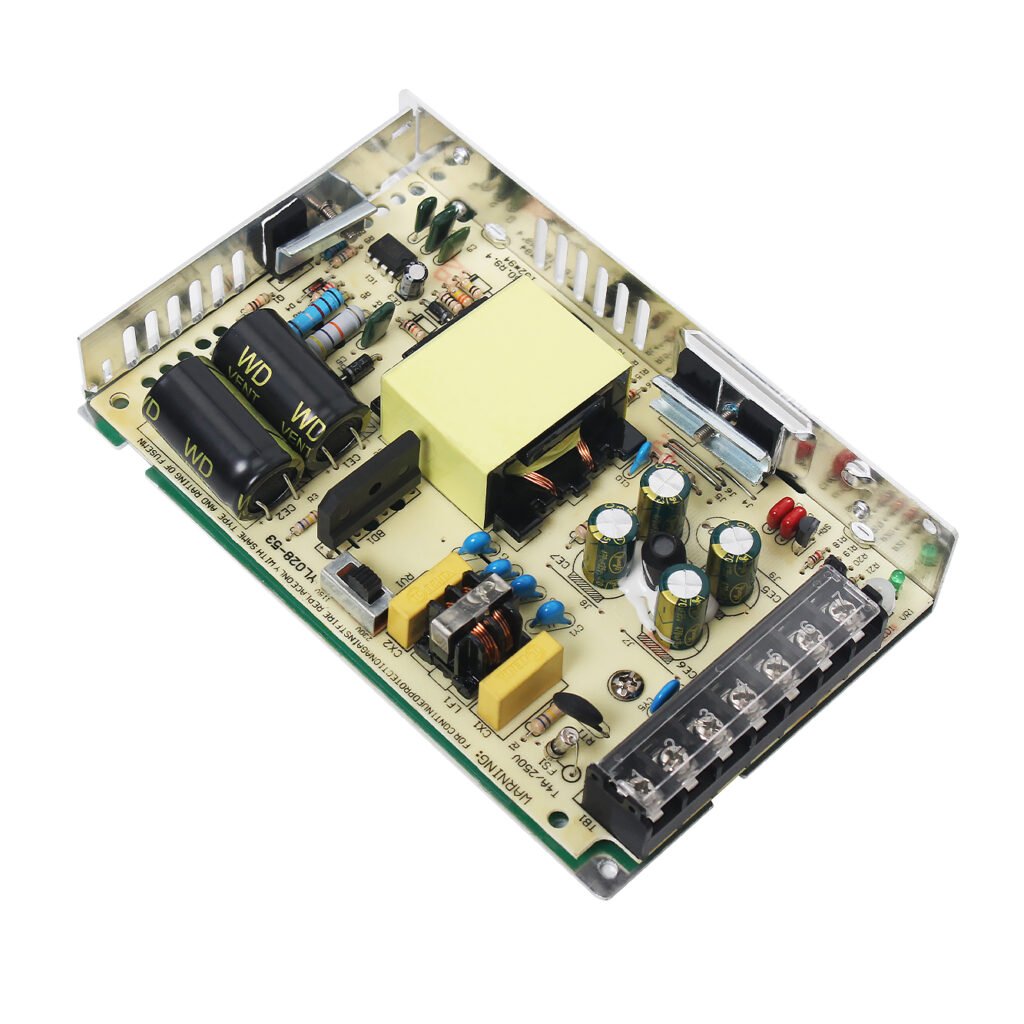Switching Mode Power Supply (SMPS), also known as a Switch-Mode Power Supply or Switching Regulator, is a high-frequency power conversion device that efficiently converts one form of electrical power into another. It is widely used in various electronic devices to provide the necessary voltage and current levels required by the load. Here’s a detailed introduction to SMPS, focusing on AC to DC conversion, along with a conceptual diagram to illustrate its operation.

Overview
SMPS functions by switching the input voltage or current on and off at a very high frequency, typically ranging from tens of kHz to several MHz. This switching action allows for efficient conversion of electrical energy through the use of smaller and lighter transformers and inductors compared to traditional linear power supplies.
AC to DC SMPS Power Supply
In an AC to DC SMPS, the input is an alternating current (AC) source, typically from the utility grid, which is converted into a stable direct current (DC) output suitable for powering electronic devices. The conversion process involves several key stages:
- Rectification: The AC input is first converted into pulsating DC through a rectifier circuit, commonly using diodes.
- Filtering: The pulsating DC is then smoothed out using capacitors to reduce ripple and provide a more stable DC output.
- Regulation: The DC voltage is further regulated to a precise level using a switching regulator, which rapidly switches a transistor or other power semiconductor device on and off to control the output voltage.
- Isolation (Optional): Depending on the application, isolation transformers may be used to provide electrical isolation between the input and output circuits for safety reasons.
Conceptual Diagram
Below is a simplified conceptual diagram illustrating the basic components of an AC to DC SMPS:
[AC Input] —-> [Rectifier] —-> [Filter Capacitor] —-> [Switching Regulator] —-> [Output Capacitor] —-> [DC Output] | |______________________________________________________________| (Feedback Control Loop)
- AC Input: The input power source, such as the utility grid.
- Rectifier: Converts AC to pulsating DC.
- Filter Capacitor: Smoothes out the pulsating DC.
- Switching Regulator: Controls the output voltage by switching the power semiconductor device rapidly.
- Output Capacitor: Further smoothes the output voltage and provides stability.
- Feedback Control Loop: Monitors the output voltage and adjusts the switching regulator to maintain the desired output level.
Advantages of SMPS
- High Efficiency: SMPS operates at high frequencies, allowing for the use of smaller and more efficient components, resulting in higher energy conversion efficiency.
- Smaller Size and Lighter Weight: Due to the high-frequency operation and efficient components, SMPS can be designed with a smaller footprint and lighter weight compared to linear power supplies.
- Better Regulation: SMPS provides tight regulation of the output voltage, ensuring stable operation of the load.
- Lower Heat Generation: The switching transistors operate in either fully on or fully off states, reducing power dissipation and heat generation.
Disadvantages
- Complexity: SMPS design can be more complex due to the high-frequency switching and need for precise control circuitry.
- Electromagnetic Interference (EMI): The high-frequency switching can generate EMI that may interfere with other electronic devices. Proper shielding and filtering are required to mitigate this issue.
Conclusion
Switching Mode Power Supplies, particularly AC to DC SMPS, are essential components in modern electronic systems due to their high efficiency, small size, and ability to provide stable power to a wide range of loads. The diagram provided offers a conceptual understanding of the key stages involved in the AC to DC conversion process.
